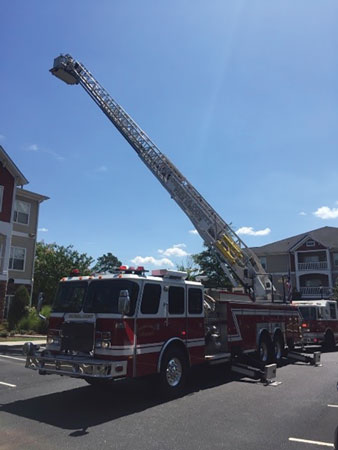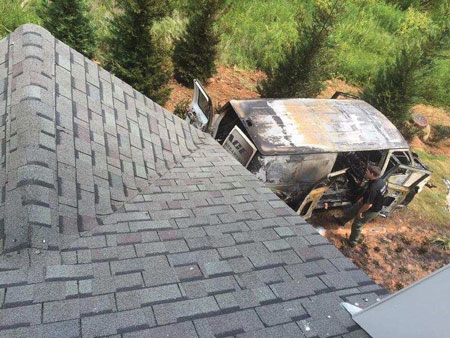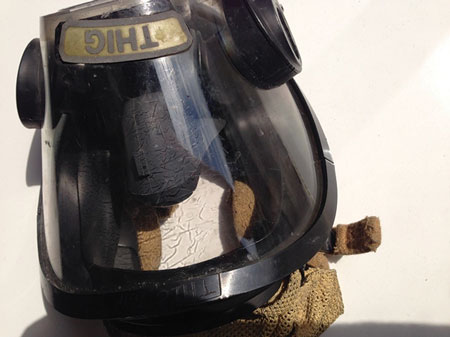
By Gary Thigpen and Brian Ward
Decision making can be difficult, even in the best of situations. All firefighters must exercise their minds and bodies through training, education, and experience to develop their decision-making capabilities. You must have a precision level of execution in everything you do. When staffing is stretched or if any level of staffing is below that specified under National Fire Protection Association (NFPA) 1710, Standard for the Organization and Deployment of Fire Suppression Operations, Emergency Medical Operations, and Special Operations to the Public by Career Fire Departments, 2016 edition, or NFPA 1720, Standard for the Organization and Deployment of Fire Suppression Operations, Emergency Medical Operations, and Special Operations to the Public by Volunteer Fire Departments, 2014 edition, even the typical call can be difficult to handle. NFPA 1710 recommends four on-duty personnel per company; NFPA 1720 recommends as a minimum four personnel available to respond in a geographically remote area.
 |
| (1) Columbia County Truck 1 positioned on the A/D corner. (Photos by Gary Thigpen.) |
Now add in the unknowns such as dispatch attempting to relay information when the information being received is limited at best. The fire officer must be able to determine in a matter of seconds the answers to a multitude of questions based on a 15- to 30-second snapshot of information that is third and fourth hand. The officer’s ability to make the correct decision is directly related to his previous training, education, and experience. Are you confident in your training and ability to step up and make the call?
Recognition Primed Decision Making (RPDM), coined by Dr. Gary Klein, presents opportunities for us to make decisions in an expedited manner based on previous training, education, and experience. When firefighters are presented with a situation, our brains run unconsciously through a series of options or mental slide trays. The research found that our brain selects the first option that seems to fit the situation – RPDM. Our levels of training, education, and experience determine whether we respond to a situation in the mode of a motion movie picture on a high-speed reel or a 35-mm projector.
Response Example
Recently, Gary Thigpen faced a situation during a typical shift where everything discussed above accumulated into multiple decisions having to be made at a definitive point in time. He was operating with normal staffing levels; however, Columbia County does not operate at the recommended four-person engine and truck company. Some stations have two personnel assigned to an engine.
Around 1100 hours on this 95-plus degree, high-humidity day, he received an alarm to respond to Ansley Townhome Apartments for a reported vehicle fire. Typically, vehicle fires are handled by one engine and are not taxing on resources. Units responded as usual until dispatch advised over the radio that this vehicle may be close to a structure but the structure is not on fire.
As an officer in the jump seat, the decision you make at this moment with minimum information will dictate the actions and results that will occur during the next several hours. The challenge is not to overreact or allow your nerves to dictate your decision. Through preplanning this apartment and running emergency medical calls, responding units had developed a slide tray (RPDM) of building construction, water supply, accessibility, occupancy levels, and other factors that assisted in making the correct decision. The first-in responding officer called a second engine to respond for assistance based on the potential for severity and the unknown variables.
While en route to the apartment location, dispatch advised that it had received additional reports of large amounts of black smoke and heavy fire conditions coming from a van that was five feet from the structure and that the nature of the burning materials inside the van was unknown. There was the possibility of propane tank involvement. Dispatch also advised that it was receiving an alarm activation from the apartment, but there still were no reports of a structure fire.
 |
| (2) An aerial view of the van’s location. |
The officer has to make another decision based on the new information. The officer advised dispatch to activate a full multifamily dwelling alarm, which consists of three engines, one truck, a chief officer, and a rescue company. This response will automatically increase the response level of staffing to 14 personnel. Whenever you are unsure, the best option always is to never hesitate to call for resources early.
Engine 2 arrived on scene to a fully involved Ford Econoline van on the C side of a three-story, wood-frame, multifamily dwelling with fire extension to the side of the building. The first-in crew quickly advanced a 1¾-inch hoseline with a 150-gallon-per-minute nozzle to fight the fire extending to the apartment building. Car 4, the Columbia County training chief, arrived during this time, assumed command, and began delegating tasks to incoming crews. The on-duty battalion chief, 801, arrived and assumed safety officer responsibilities. Truck 1 was immediately assigned to set up the ladder and check the roof for extension (photo 1).
Engine 3 provided a water supply and laid into the initial fire attack engine. Engine 1 was assigned to check for extension into the exposures and the attic, where light smoke conditions were encountered.
 |
| (3) The van, which was behind the apartment units, made access difficult. |
During the first five minutes of this call, several actions were taken, decisions were made, and resources were assigned. There is enough going on at this moment without additional confusion or difficulty in completing a task; however, that is not the way this call played out.
The small propane tanks mentioned earlier began to vent while crews were extinguishing the exterior structure fire. As additional crews arrived and life safety of the occupants inside the structure was confirmed, resources were quickly reallocated to attacking the van fire. Multiple 1¾-inch hoselines were used to extinguish the van fire.
Typically, one 1¾-inch hoseline will make quick work of a car fire. However, crews were having a difficult time extinguishing the fire. The decision was made to use the two hoselines to cool the van while two ABC and one carbon monoxide extinguisher were discharged inside the van.
Now, recall that crews were still operating inside the apartment while this incident was escalating outside. While advancing on the vehicle fire, firefighters found some form of chemical in the back of the van after the containers spilled, leaking product on the ground. A propane tank and gasoline equipment in the back of the van were feeding the fire. At this point, we established a foam line to extinguish the remaining fire (photo 2). In accordance with local ordinances, we notified the local environmental protection agency for investigative purposes and to determine if any runoff had entered the nearby waterway.
The Roles of Experience and Training in This Response
This incident escalated from a simple car fire to a car fire that produced heavy smoke, extended to the exterior of the apartment structure, and became a hazardous materials incident. The RPDM concept enabled the fire officer to anticipate the possible outcomes of each of these developments based on his experience, training, and education. The lack of accurate information or a breakdown in communications was not the fault of dispatch, which attempted to relay as much information in the shortest time to the correct resources. As fire officers, we must internalize this information in seconds within the context of our previous training, education, and experience and make decisions that will set the operational plan in motion. If the fire officer in this incident did not make the right decisions from the very beginning, the situation would have resulted in additional property damage and displaced families (photo 3).
 |
| (4) Note the glassification and signs of failure on this face piece. |
Lessons Learned
- Be prepared for the unexpected, and do not take any situation for granted. This could have been a potential active-shooter situation. Keep your head on a swivel at all times. Ask the question, “Why is a vehicle parked in the back of the apartment, and what could be in that vehicle?”
- Do not be afraid to call for resources early, even if you request them to respond nonemergency. Having resources headed in your direction sometimes can be the difference in a situation. As the first five minutes of the incident go, so go the next five hours. If it is a mess, it will stay a mess.
- RPDM is developed through training, education, and experience. We must learn to be technically competent in our chosen craft and move as the motion movie picture and not the obsolete 35-mm projector. To do this, set up training drills that require firefighters to use mental and physical efforts (cognitive and psychomotor learning domains). These drills should provide the firefighters with opportunities to practice making decisions and adapting to a situation as new information becomes known or the situation changes (see “Developing Tactical Decision Games” by Brian Ward in the Bibliography.)
- Review staffing levels, and determine if your department’s standard operating procedures align with jurisdiction demographics and occupancy types. Become familiar with NFPA 1710 or NFPA 1720, depending on whether your department is career or volunteer. Review the National Institute of Standards and Technology (NIST) “Landmark Residential Fire Study Shows How Crew Sizes and Arrival Times Influence Saving Lives and Property,” which discusses how 22 essential fireground tasks can be completed when two-, three-, and four-person crews are available.
- Always check your gear after every call. Although Thigpen was not inside the structure fighting fire in the above response, he encountered a great deal of thermal insult from the chemicals and other accelerants involved in the exterior fire. This caused his mask to begin the glassification process and show signs of failure (spider-webbing effect), which he was not aware of while wearing the mask (photo 4). NIST conducted a study, available at (http://www.nist.gov/el/fire_research/scba-120611.cfm), that found that all brands of masks will fail at 536°F. There are also studies showing that the glassification process starts at just under 300°F. Many firefighters have heard of the terminology “high temperature lens.” Do not allow this to alter your decision on how far the weakest part of your ensemble can go. NFPA 1981, Standard on Open-Circuit Self-Contained Breathing Apparatus (SCBA) for Emergency Services, 2013 edition, states that the face piece, to be compliant, must be able to sustain being subjected to 500°F for five minutes in a test oven. Firefighters must understand how their ensemble is tested and to what degree so they can use their ensemble effectively.
Bibliography
Klein, Gary. (2003). The Power of Intuition. New York, NY. Double Day.
National Institute of Standards and Technology. Landmark Residential Fire Study Shows How Crew Sizes and Arrival Times Influence Saving Lives and Property. Retrieved from http://www.nist.gov/fire/ssr1.cfm.
National Institute of Standards and Technology. Study Finds Failure Points in Firefighter Protective Equipment. Retrieved from http://www.nist.gov/el/fire_research/scba-120611.cfm.
Ward, Brian J. (July 2016). Developing Tactical Decision Games. Fire Engineering.
Ward, Brian J. (2016). Barn Boss Leadership. Charleston, SC. FireServiceSLT.
GARY THIGPEN, a lieutenant for the Columbia County (GA) Fire Department, is a live fire instructor with the State of Georgia and teaches on various topics including engine and truck company operations. He is a member of the Georgia Search and Rescue Team and the Columbia County HazMat Team.
BRIAN WARD is division leader for fire protection and emergency operations for Georgia Pacific. He is the author of Barn Boss Leadership and Training Officer’s Desk Reference. He is a member of the International Society of Fire Service Instructors and Georgia Smoke Diver #741 and the founder of BarnBossLeadership.com.
Developing Tactical Decision Games
Simulation Training: Decision-Making Aid
Structural Firefighting with Limited Staffing
Fire Engineering Archives

